Something different this week.
The TikTok above works, and is jarring for the viewer, because humans, like all animals, are extremely anticipatory creatures. Our brains subconsciously process and analyse thousands of bits of movement every day, and expected actions, in the form of watching other people and objects. While watching this TikTok our brains are processing the guy’s movement in the car, first of all expecting the handshake. We track his movements and expect him to get out of the car door, then the boot, then the door. We’re looking at him moving towards the chair and crouching, expecting him to sit down. We’re looking at the movement of his arms and expecting him to throw the shoe. We’re looking at his hands expecting him to put the shoe back on. We’re looking towards the bike expecting him to hop on as he moves towards it. We’re looking at him walking to the basketball and crouching expecting him to pick it up. Finally we’re looking at him running towards the basket expecting the layup.
But none of the anticipatory payoff happens. None of what our brains are so used to seeing happens, and so the video works.
This stuff is jarring because our brains have learned to subconsciously process all these actions to make our existence easier and more efficient. It would be inefficient to go about our lives while having absolutely no idea what was going to happen, in every action, until it was actually happening. We are walking anticipation machines.
But this video, and something particular in tennis, are great examples of how to exploit that machine.
What on god’s green earth does this have to do with tennis?
Carlos Alcaraz, the 18 year old phenom and brand new Top 10’er, has an interesting performance quirk.
He’s really f*cking good at drop shots.
In Miami, where he won his first Masters 1000 title, he was winning a slightly ridiculous 51/59 drop shots played.
That is not normal.
And neither is what type of drop shots Alcaraz is playing. Across 42 matches, on multiple surfaces in 2021 and 2022, Alcaraz hit:
64 forehand drop shots (32 winners, 8 forcing errors, 3 unforced errors, 21 play continued)
26 backhand drop shots
Data: Golden Set Analytics
71% of his drop shots were forehands in that period. Or approximately twice as many forehand drop shots as backhand drop shots. In stark contrast his opponents in those matches hit 17 forehand drop shots and 32 backhand drop shots. The average player, as well as the ATP Top 10, hit approx twice as many backhand drop shots as forehand drop shots.
Alcaraz does the opposite.
Why? And where does the TikTok come in?
Anticipation is something that’s talked about plenty in tennis. Reading serve direction, wrong-footing the opponent with groundstroke direction etc etc. But drop shots, and Alcaraz’s amazing forehand drop shots in particular, are probably the best example of exploiting anticipation on tour right now.
First of all, his placement. Alcaraz’s favourite forehand drop shot placement is on the AD side (or the backhand side of right hander’s):
There are a few reasons for this. Firstly it gives him a bit more margin, aiming cross court, if he’s in his backhand corner like this ↓
And secondly it means his opponents often find themselves in bad positions to track the drop shots down ↓

And if his opponent is in the other corner, then Alcaraz simply benefits from aiming to a spot (the AD side) where his opponents have to make up a lot of ground, even in a straight line, to get there ↓
These drop shots work just as well as serve+1’s as they do in rallies. Especially on clay with returners standing deep, Alcaraz often has plenty of time to hit his forehand from either forehand or backhand corners, after his serve.
The young Spaniard also has excellent disguise on that drop shot1:
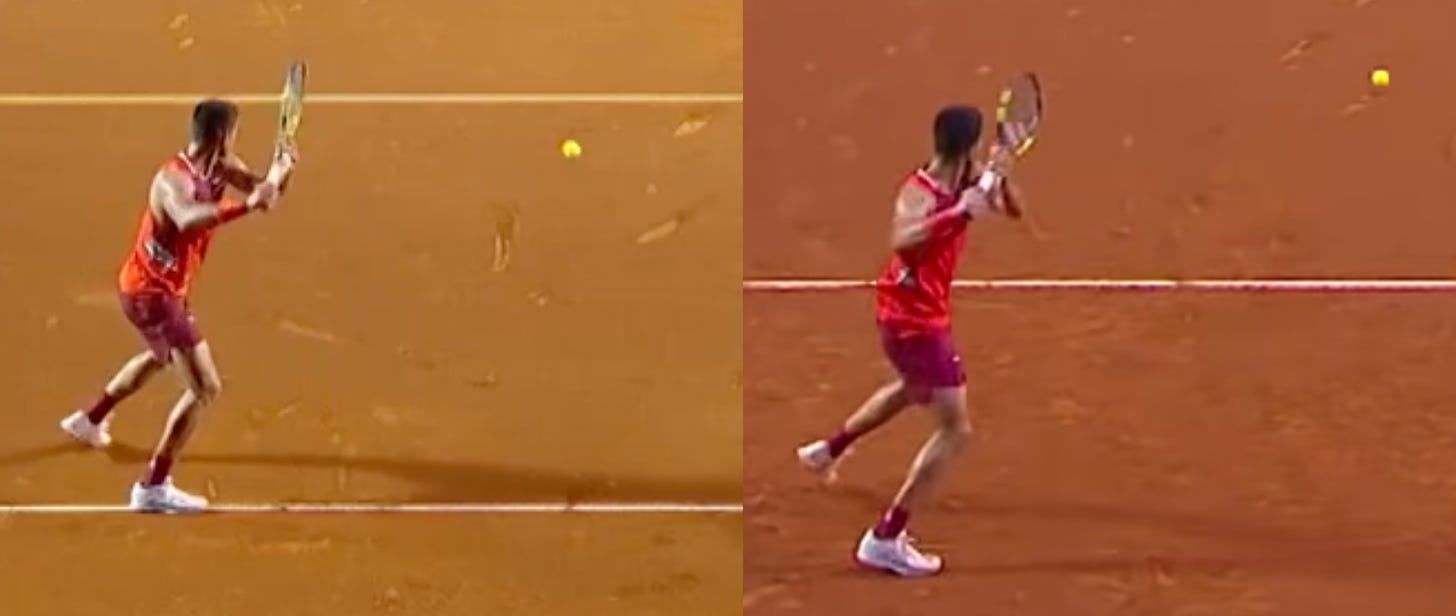
Capitalising on anticipation
But the biggest reason Alcaraz’s drop shots are so effective doesn’t even have to do with the drop shot itself. It has to do with his usual forehand groundstroke.
The vast majority of Alcaraz’s shots on a tennis court while in a rally are forehand and backhand topspin groundstrokes. And Alcaraz has some of the biggest firepower on tour.
At the US Open last year Alcaraz was averaging 82mph (132kph) on his forehand side against Tsitsipas in the 3rd Round. He averaged 78mph across the tournament as a whole, 3mph faster than the field.
This is the most important part of what makes Alcaraz’s drop shots, and especially his forehand drop shot, so great: the anticipatory threat. The more power you have, the more offensively perceived your groundstrokes are by the opponent, the further back your opponent often has to move to anticipate, the more room you have to land the drop shot, the more jarring the change up is for the opponent.2
Here are Alcaraz and Nadal (who also does this extremely effectively with his forehand threat into drop shot) with the same jarring effect. Their opponents looking at them for clues for what’s about to happen next, understandably predicting more forehand power, but getting burned:

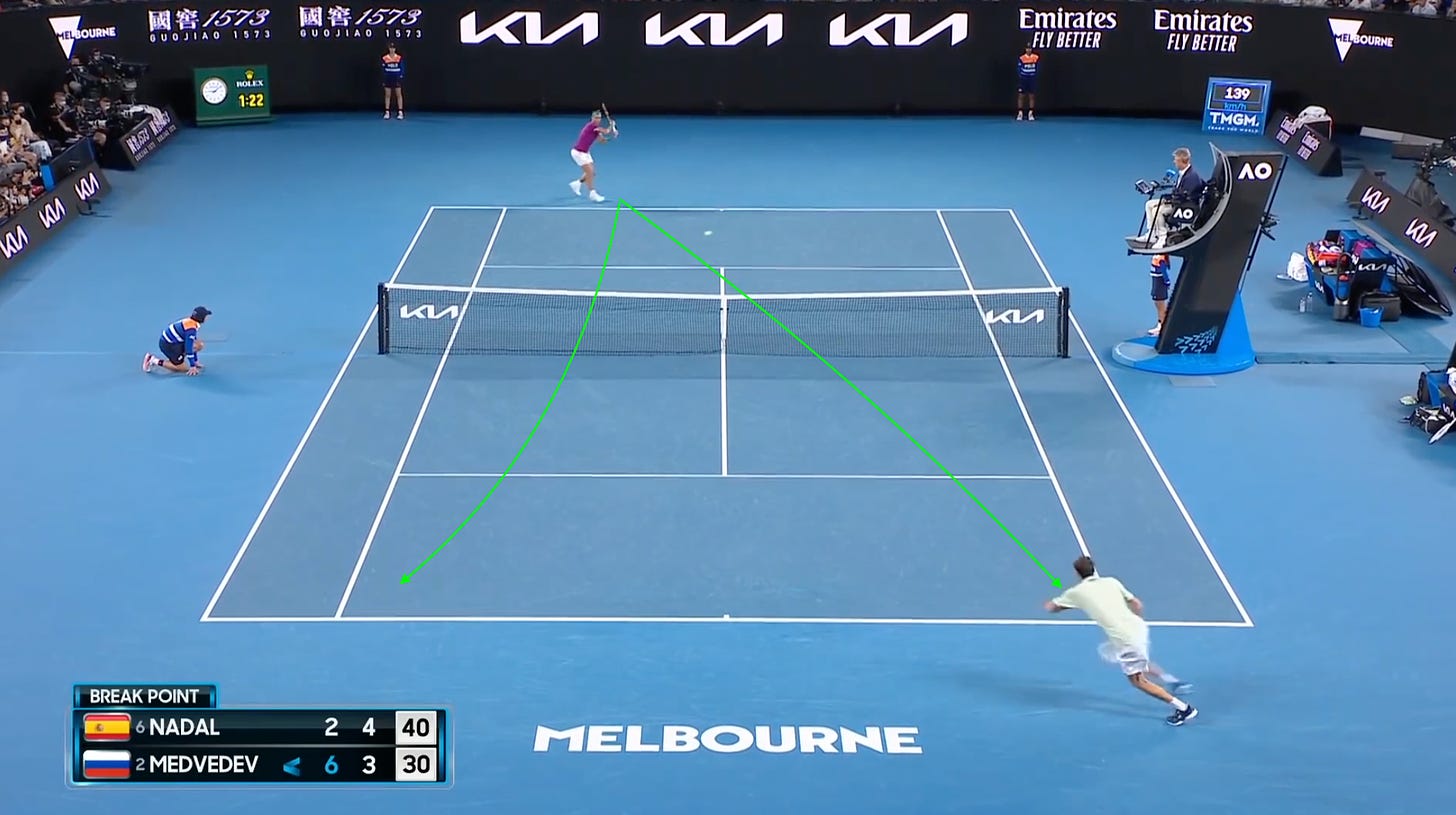
Simply put Alcaraz’s (and Nadal’s) biggest weapon on the drop shot is the juxtaposition or the delta between his usual forehand offence and his drop shot touch. And it’s almost certainly the biggest delta on tour right now. Great touch/placement, and excellent instincts of when to use the dropper, complete the package.
All of this combines to mean that Alcaraz has the most successful and efficient (highest win rate) drop shot in the Top 10 right now (he also uses it more often and even more successfully on pressure points).
So as you watch the rest of the clay season unfold, a surface upon which the drop shot is extremely effective in part due to deeper court positions held by many elite players, keep an eye out for the best drop shot on tour right now.
Carlos Alcaraz, never letting ‘em know his next move.
— MW
Twitter: @mattracquet
See you on Thursday.
Bottom: David Ramos/Getty
Most recent:
Left is drop shot, right is forehand drive.
There are exceptions to this. For example Hugo Gaston plays more drop shots than just about anyone else on tour right now despite not possessing large groundstroke weapons (ie anticipatory threats). But 1. Gaston uses so many drop shots precisely because he doesn’t have weapons, ie it’s the better option than his groundstrokes, and 2. his win rate on those drop shots is far, far lower than Alcaraz and others, in part because of a lower anticipatory threat.



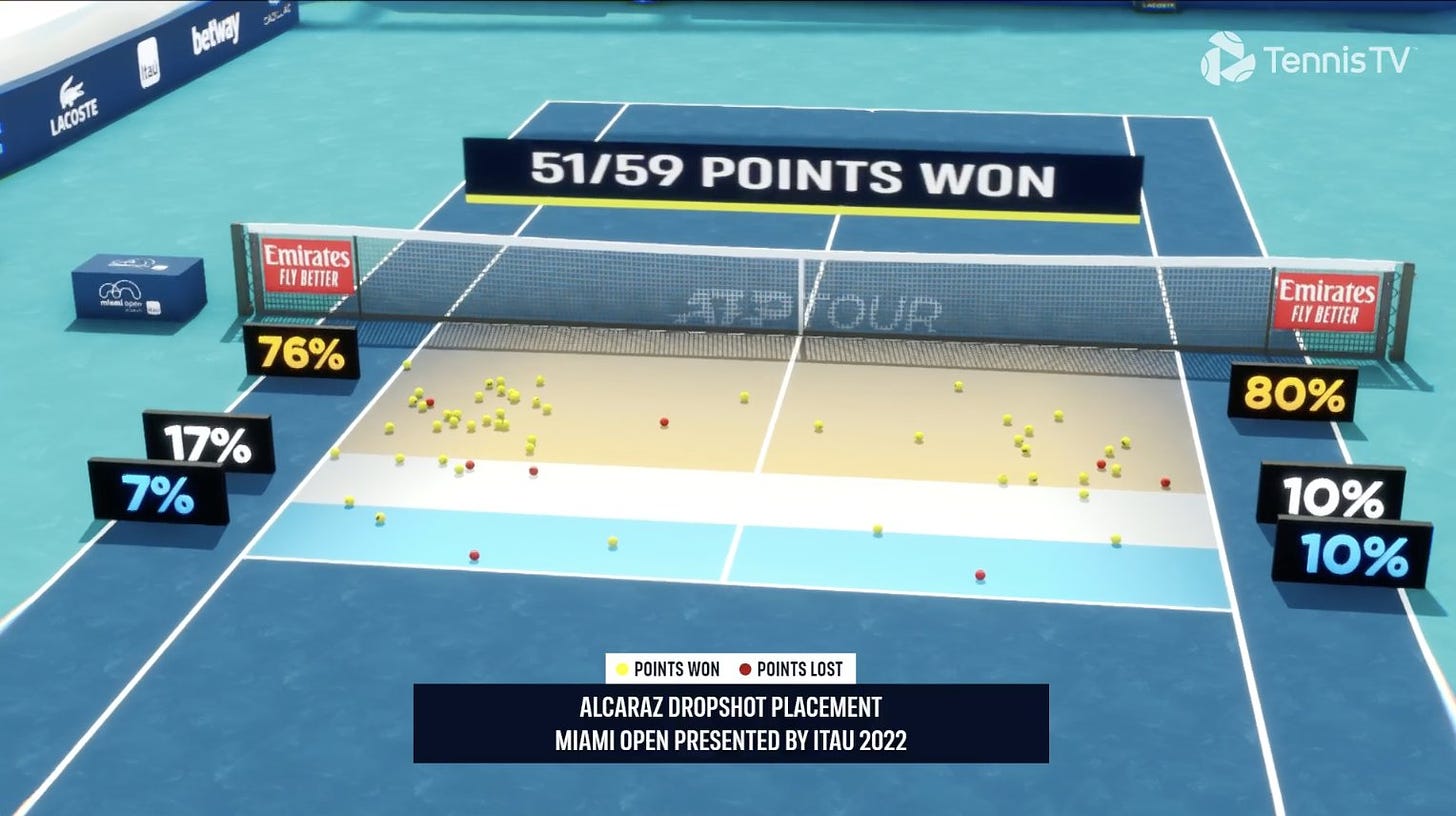
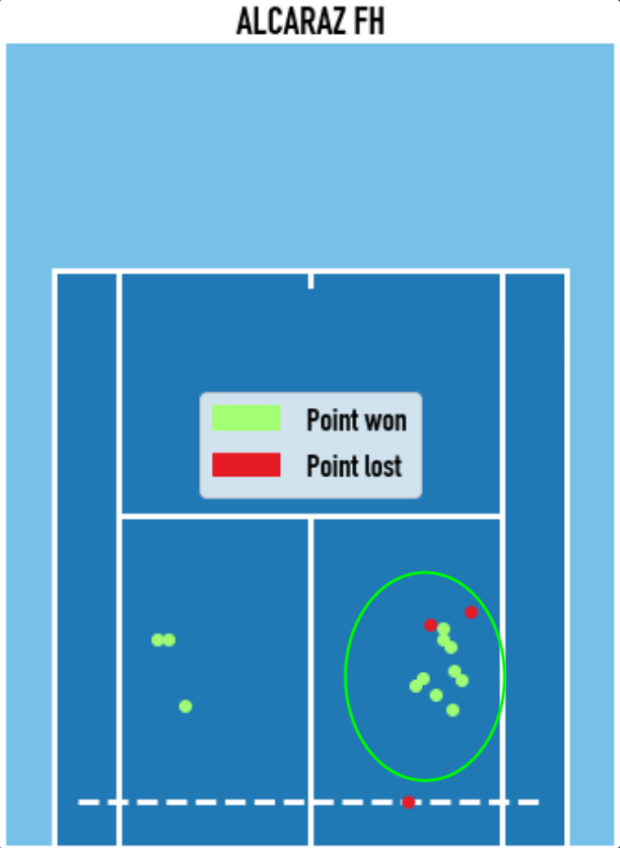
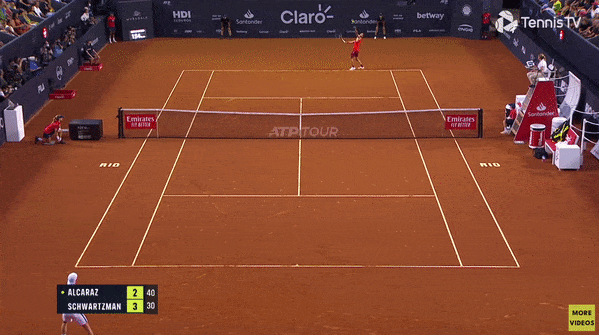
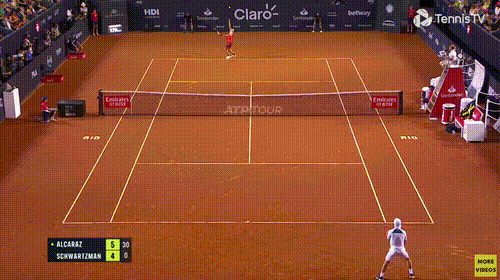

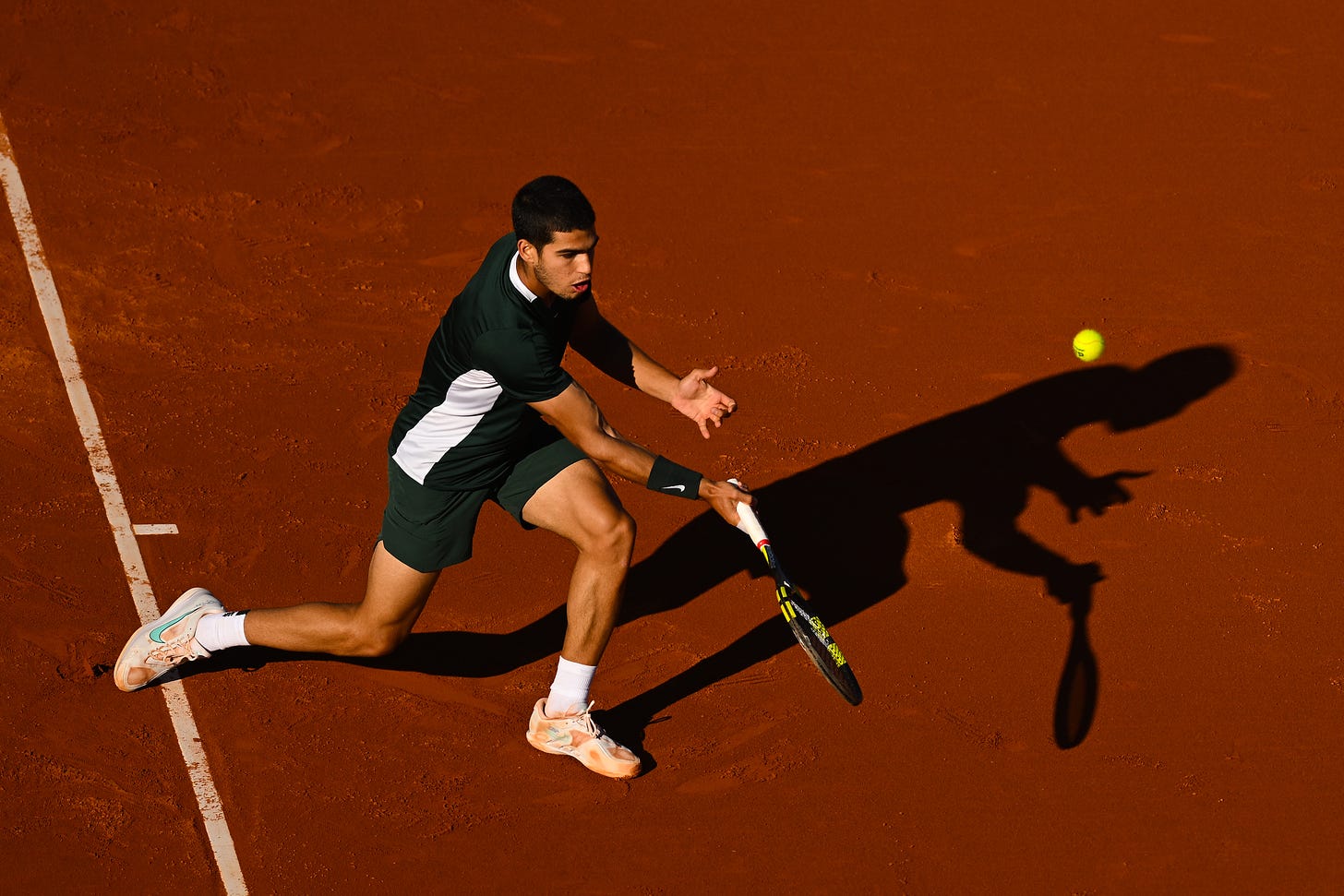


Share this post